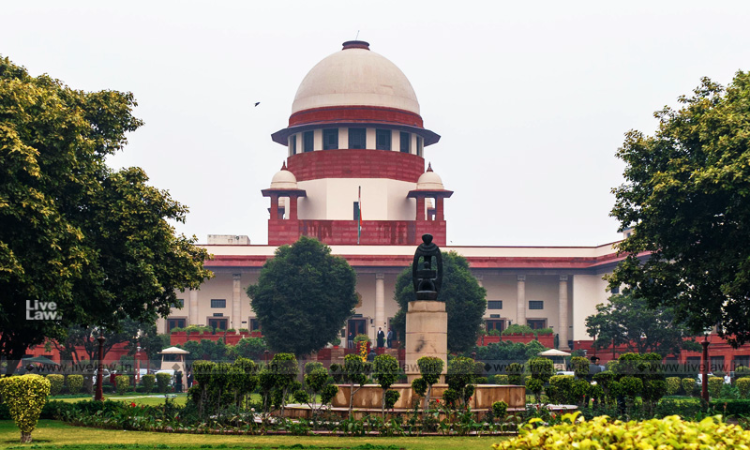- Home
- /
- Top Stories
- /
- "Set Up Anti-Corruption Courts...
"Set Up Anti-Corruption Courts Across Districts & Demonetize 100 Rupee Notes": Plea In Supreme Court
Sanya Talwar
22 Dec 2020 4:12 AM
A plea has been preferred in the Supreme Court seeking anti-corruption courts, with a mandate to dispose of each case within a year in all districts across India.Filed on behalf of BJP Leader and Advocate Ashwini Upadhyay, the plea states that long-pending cases of economic offence and widespread corruption, slows down the development process in the country. "Due to long pendency of cases...
A plea has been preferred in the Supreme Court seeking anti-corruption courts, with a mandate to dispose of each case within a year in all districts across India.
Filed on behalf of BJP Leader and Advocate Ashwini Upadhyay, the plea states that long-pending cases of economic offence and widespread corruption, slows down the development process in the country.
"Due to long pendency of cases and week anti-corruption laws, none of the welfare schemes and government departments are corruption-free due to which, India ranked 1 in illegal gun ownership and illegal immigration, 2 in Intentional Homicides and Traffic Related Deaths, 3 in CO2 Emission and 4 in Slavery Index," the plea states
Further, the plea also suggests that currency notes of above Rs 100 be demonetised for a stronger fight against black money.
"The Centre can save this huge public money by recalling currency above Rs 100, restricting cash transaction above Rs 5,000, linking assets above Rs 50,000 to Aadhaar, confiscating 100 per cent black money, benami property, disproportionate assets, and awarding life imprisonment to looters," the petition says.
It is contended that the injury caused to people is extremely large because corruption is an insidious plague, having numerous corrosive effects on society.
It undermines democracy and rule of law, leads to violations of human rights, distorts markets, erodes quality of life and allows organized crime like separatism, terrorism, naxalism, radicalism, gambling, smuggling, kidnapping, money laundering and extortion, and other threats to human security to flourish. It hurts the EWS-BPL families disproportionately by diverting the funds intended for development, undermines government's ability to provide basic services, seeds inequality & injustice and discourages foreign aids and investment, the plea argues.
The PIL (Public Interest Litigation) contends that India has never been ranked among the top 50 in the Corruption Perception Index and that the Centre and state governments have also not taken appropriate steps in this regard.
The plea has stated that Right to life and liberty guaranteed under Article 21 cannot be secured and the golden goals of Preamble cannot be achieved without curbing corruption and that Centre and States must take steps to reaffirm the rule of law, improve transparency and to warn the looters that betrayal of public trust will no longer be tolerated.
It is contended that India's anti-corruption laws are very weak and ineffective and have failed to control corruption. "Root cause of 50% problems is corruption and it can't be controlled without tax reform police reform judicial reform administrative reform and legal reform," Upadhyay argues.
Alternatively, the plea seeks directions to all High Courts to take appropriate steps to decide corruption related cases vis-à-vis black money, benami property, disproportionate assets, bribery, money laundering, tax evasion, profiteering, hoarding adulteration human-drug trafficking, black marketing, dishonest misappropriation of property, cheating, fraud, forgery, corporate fraud, forensic fraud, foreign exchange and other economic offences within one year.
Recently, Upadhyay had also filed a petition seeking directions to the Centre, states and UTs for setting up an Expert Committee to suggest steps for improving India's deplorable ranking on the Global Corruption Perception Index.

